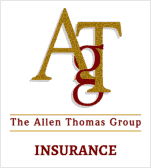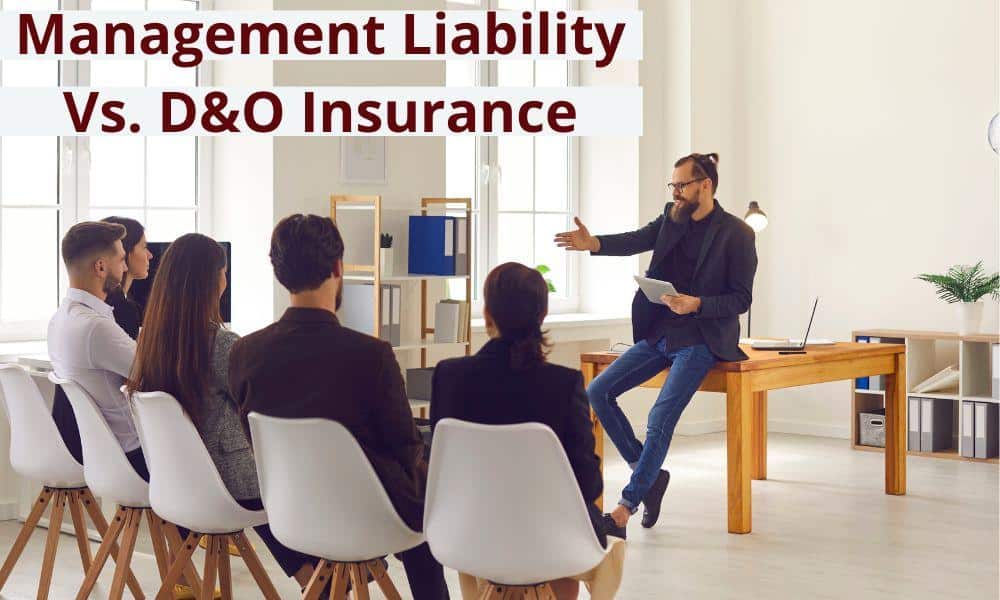Did you know that management liability insurance and directors and officers insurance, though both vital for business protection, serve distinct purposes and provide varying degrees of coverage? Navigating through the intricacies of these insurance concepts can be complex.
In this post, we strive to demystify both types of insurance and clearly distinguish their differences.
Follow us as we understand how each one operates, who needs it, and how it can vastly influence your business risk landscape in different scenarios. Don’t miss this chance to arm yourself with essential knowledge that could save your company from crippling financial consequences.
While D&O insurance protects individual directors and officers from personal liability in the event of a lawsuit, management liability provides broader coverage to both the company and its directors/officers against legal liabilities and statutory obligations. In addition, traditional D&O policies may not cover all exposures due to changes in legislation, while management liability can provide a blanket cover for directors, officers, and employees. It’s essential to consult with experts in this area, such as our independent insurance agency, to understand your coverage options fully.
Directors and Officers Liability Basics
Directors and Officers Liability (D&O) insurance plays a crucial role in protecting the leaders of organizations from personal financial loss due to claims made against them in their capacity as directors or officers. It covers legal expenses, settlements, and judgments arising from claims related to alleged wrongful acts, such as mismanagement, breach of fiduciary duty, or regulatory violations. By having D&O insurance in place, directors and officers can have peace of mind knowing that their personal assets are shielded from potential litigation risks.
Now that we have a basic understanding of what D&O liability entails let’s dive into an overview of Directors and Officers Liability Law.
Overview of Directors and Officers Liability Law
Directors and Officers Liability Law encompasses the legal frameworks and regulations that govern the responsibilities, duties, and potential liabilities of directors and officers. These laws vary from jurisdiction to jurisdiction but generally aim to ensure accountability, transparency, and responsible decision-making by corporate leaders.
In the United States, directors owe a fiduciary duty of care and loyalty to the corporation and its shareholders. They are expected to act in good faith, with due diligence, prudence, and in the company’s best interests. They may be held personally liable for resulting damages if they fail to meet these obligations or engage in conduct that harms the company or its stakeholders.
For instance, if a director recklessly approves a risky business strategy without proper research or analysis, leading to significant financial losses for the company, shareholders could potentially bring forth a lawsuit against that director for breaching their fiduciary duty.
Corporate governance laws and regulations further reinforce the standards expected from directors and officers. Examples include the Sarbanes-Oxley Act (SOX) in the United States, which mandates financial transparency and accountability for publicly traded companies.
The intricacies of Directors and Officers Liability Law make it essential for directors and officers to stay informed about their legal obligations and potential liabilities. By understanding the legal landscape, leaders can proactively mitigate risks, make informed decisions, and protect their interests while fulfilling their duties to their organizations.
Understanding Management Liability
Understanding management liability is crucial for executives and organizations in today’s complex business landscape. It refers to the potential legal and financial risks leaders may face while performing their duties.
Unlike Directors and Officers (D&O) liability, which specifically focuses on the actions of directors and officers, management liability insurance encompasses a broader scope of individuals within an organization who hold leadership positions.
Let’s consider an example to illustrate this concept. Imagine a scenario where a high-level company executive makes a decision that results in significant financial losses for the organization.
In such a case, the executive and the company could face legal action due to mismanagement or negligence. This highlights how management liability extends beyond directors and officers to include managers at various levels of an organization.
Management liability covers various areas, including employment practices liability, fiduciary liability, crime insurance, professional liability, cyber liability, and more. Each area presents risks and challenges that leaders must be aware of to manage potential liabilities and effectively protect themselves and their companies.
Now that we have a basic understanding of management liability let’s explore some of the critical legal and financial risks involved.
The Legal and Financial Risks Involved
Regarding management liability, leaders should consider several legal and financial risks. These risks can significantly affect individuals in leadership roles and the organizations they represent.
One significant risk is the potential for lawsuits related to employment practices. This can include claims of discrimination, harassment, wrongful termination, or violation of labor laws. Such lawsuits can result in financial damages and damage a company’s reputation.
Another risk is fiduciary liability which relates to managing employee benefit plans, such as pension funds or 401(k) plans. Failure to fulfill fiduciary duties or make sound investment decisions could lead to lawsuits and significant financial losses.
Additionally, the increasing cyber-attack threat poses a significant risk to organizations and their leaders. Data breaches and cyber incidents can result in legal liability, financial losses, and reputational damage. Leaders must prioritize cybersecurity measures to mitigate these risks.
Other potential risks include allegations of professional negligence, such as errors or omissions in providing professional services or claims related to fraudulent organizational activities, which can result in legal consequences and financial losses.
Consider a situation where a company’s chief technology officer fails to implement adequate security measures, resulting in a data breach and significant financial losses and reputational damage. The CTO could face legal action for negligence, and the company may be held responsible for failing to protect consumer data.
By understanding these legal and financial risks associated with management liability, leaders can take proactive steps to mitigate potential exposures through proper risk management strategies, comprehensive insurance coverage, and adhering to best practices within their respective industries.
Key Differences Between Management and D&O Liability
Understanding the differences between management liability and directors and officers (D&O) liability is vital for business owners and executives to effectively protect themselves and their organizations. While both types of insurance fall under the umbrella of management liability, distinct variations should be considered.
Management liability insurance covers a broad range of risks company executives face, providing coverage for not only D&O liability but also other areas such as employment practices liability, fiduciary liability, and cyber liability. It offers comprehensive protection for the entire management team, safeguarding against legal actions related to workplace misconduct, breaches of fiduciary duty, or data breaches.
On the other hand, D&O insurance focuses explicitly on protecting directors and officers from personal liability claims arising from their actions or decisions made while carrying out their professional duties. It offers coverage for claims related to mismanagement, financial negligence, breach of fiduciary duty, shareholder disputes, regulatory investigations, or allegations of fraud.
It’s essential to recognize that management liability insurance provides a broader scope of coverage beyond just D&O liability alone. This aspect allows businesses to have a more comprehensive risk management strategy.
- Business owners and executives must understand the differences between management liability and directors and officers (D&O) liability insurance to protect themselves and their organizations effectively. While both fall under the umbrella of management liability, D&O insurance focuses explicitly on protecting directors and officers from personal liability claims related to their actions or decisions made while carrying out their professional duties. In contrast, management liability offers comprehensive coverage for the entire management team in areas such as employment practices, fiduciary, and cyber liability. A more comprehensive risk management strategy that includes both types of insurance can provide broader protection for businesses against legal actions related to workplace misconduct, breaches of fiduciary duty, or data breaches.
Legal Obligations and Coverage Differences
There are some key aspects to consider regarding legal obligations and coverage differences between management liability and D&O insurance.
In terms of legal obligations, directors and officers have a fiduciary duty to act in the company’s and its shareholders’ best interests. They are responsible for making informed decisions based on diligent research and sound judgment. They may face personal liability if they fail to fulfill these duties correctly and in compliance with applicable laws and regulations.
D&O insurance helps protect directors and officers by covering defense costs and any potential settlements or judgments resulting from claims against them. This coverage is critical because even if a share is determined to be without merit, the legal expenses can be significant.
In contrast, management liability insurance extends coverage beyond just directors and officers to other management team members. It takes into account the fact that various positions within an organization share responsibilities and potential liabilities. By encompassing a more comprehensive range of individuals, this type of insurance helps ensure comprehensive protection for the entire management team.
Furthermore, management liability insurance often includes added coverage for employment practices liability, which addresses claims related to issues such as discrimination, harassment, wrongful termination, or workplace retaliation.
Understanding these legal obligations and coverage differences allows business owners and executives to make informed decisions regarding protecting their organizations and themselves from potential liability risks.
- A 2020 survey by Chubb showed that 35% of respondents mistakenly believed that Director’s and Officer’s insurance also covers the company against legal liabilities, highlighting the need for a more educated understanding of distinctions between D&O and Management Liability insurance.
- A 2019 Towers Watson study discovered that only 25% of public companies had both D&O and management liability insurance indicating the imbalance in awareness about these different forms of coverage.
- According to a report published by Marsh & McLennan Companies in 2021, claims against directors and officers surged by approx 22%, indicating a compelling need for distinct D&O insurance coverage apart from Management Liability coverages.
Safeguarding Against Liability Risks
In today’s complex business landscape, safeguarding against liability risks is paramount. Every decision made by managers and executives can potentially expose them to legal actions and financial repercussions. To navigate these risks effectively, it is crucial to understand the possible sources of management liability. These may include claims related to negligence, breach of fiduciary duty, employment practices, or even cyber incidents. By identifying these risks, businesses can take proactive measures to protect their leaders from potential lawsuits.
One way to safeguard against liability risks is by implementing robust corporate governance practices. This involves establishing clear roles and responsibilities for directors and officers within an organization. By ensuring proper oversight and accountability, businesses can minimize the likelihood of mismanagement and reduce their exposure to legal actions.
Another important aspect of safeguarding against liability risks is effective risk management strategies. This includes conducting regular risk assessments to identify potential areas of vulnerability and implementing measures to mitigate those risks. For example, implementing strong internal controls and protocols can help prevent fraudulent activities or misconduct within the organization.
Let’s say a company conducts a thorough risk assessment and identifies that cybersecurity poses a significant risk for its management team.
In response, they invest in comprehensive cybersecurity measures such as encryption protocols, regular software updates, and employee training on data protection.
Such proactive steps can significantly reduce the company’s exposure to cyber-related liabilities.
It’s essential to note that while preventive measures are crucial, they may not eliminate the possibility of litigation or financial loss. Therefore, insurance coverage plays a vital role in safeguarding against these risks.
Now let’s explore the importance of insurance coverage and other protective measures in managing liability risks.
Insurance Coverage and Other Protective Measures
Insurance coverage specific to management liability plays a critical role in protecting directors and officers from personal financial losses resulting from legal actions.
Directors and Officers (D&O) insurance policies provide coverage for defense costs, settlements, and judgments arising from claims related to management decisions. This includes allegations of negligence, errors and omissions, breach of fiduciary duty, and more.
For instance, if shareholders sue a director for alleged mismanagement leading to financial losses, a D&O insurance policy can help cover the legal expenses incurred in defending against the claim. It provides a crucial safety net for individuals serving in leadership positions within an organization.
In addition to insurance coverage, other protective measures can also be employed. Businesses can establish indemnification agreements allowing them to reimburse directors and officers for expenses they may incur while performing their duties.
Furthermore, having strong internal policies and procedures in place can act as an additional layer of protection. This includes promoting ethical conduct, providing regular compliance and corporate governance training, and adhering to best practices in risk management.
Think of these protective measures as a suit of armor for directors and officers. Just as knights wore armor to shield themselves during battle, insurance coverage and other protective measures protected against potential liabilities.
By combining proper insurance coverage with other protective measures, businesses can create a comprehensive strategy to safeguard their directors and officers from potential liability risks.
Are there any overlaps in coverage between management liability and directors and officers insurance?
Yes, coverage overlaps between management liability and directors and officers (D&O) insurance.
Both policies generally provide coverage for claims related to wrongful acts committed by managers and executives, such as allegations of negligence, mismanagement, or breaches of fiduciary duty. While specific policy terms and conditions may vary, the core purpose of both types of insurance is to protect individuals in leadership positions from personal liability.
According to a survey conducted by Willis Towers Watson in 2022, approximately 85% of management liability policies include coverage for D&O claims, further highlighting the commonalities between these coverages.
What factors should be considered when deciding which type of insurance is needed for a specific business?
Several factors should be considered when deciding which type of insurance is needed for a specific business. Firstly, the nature of the company and its associated risks are crucial in determining the level of coverage required.
For instance, a manufacturing company may prioritize product liability insurance due to potential product defects. Secondly, the size and structure of the organization play a role in deciding whether general liability or professional liability (E&O) insurance is more suitable. Moreover, local regulations and industry requirements should be considered to ensure compliance.
Finally, analyzing historical claim data and consulting with insurance professionals can provide valuable insights for making an informed decision.
What types of risks are covered by directors and officers insurance?
Directors and officers insurance typically covers a range of risks corporate executives face, including claims related to mismanagement, breach of fiduciary duty, financial misstatements, and employment practices.
This type of insurance protects directors and officers against legal expenses and damages from lawsuits brought by shareholders, employees, regulators, or other stakeholders.
According to a study, securities class action suits accounted for the majority (57%) of all management liability claims filed in 2022, followed by shareholder derivative actions (16%) and employment-related claims (12%). Thus, directors and officers insurance is crucial in mitigating financial risks associated with leadership positions.
How much does each type of insurance generally cost?
The cost of management liability insurance and directors and officers (D&O) insurance can vary depending on the company’s size, industry, claims history, and coverage limits. Generally, management liability insurance is more comprehensive and may include D&O coverage and other types of protection like employment practices and fiduciary liability.
According to recent statistics, the average cost for a small business’s D&O insurance policy ranges from $5,000 to $10,000 annually, while larger corporations might pay premiums from $25,000 to $100,000 annually.
Businesses must evaluate their specific needs and consult insurance providers for accurate cost estimates.
What types of risks are covered by management liability insurance?
Management liability insurance typically covers a range of risks, including directors and officers (D&O) liability, employment practices liability, fiduciary liability, and crime coverage. D&O liability coverage protects executives and board members from claims resulting from their decisions and actions, while employment practices liability covers claims related to workplace discrimination, harassment, or wrongful termination.
Fiduciary liability coverage protects against claims of mismanagement of employee benefit plans. Crime coverage helps mitigate losses caused by employee theft, fraud, or forgery.
According to a survey by Woodruff-Sawyer, D&O claims frequency increased by 31% between 2016 and 2020, highlighting the importance of comprehensive management liability coverage in today’s business landscape.
Get The Liability Coverage You Need For Your Business Today
At The Allen Thomas Group, we understand that protecting your business is crucial. That’s why we offer a range of insurance options tailored specifically for management liability and directors and officers. These two types of coverage may seem similar, but they have distinct differences that you need to be aware of.
While both types of insurance offer important protection, it’s essential to understand the nuances between them. By having a comprehensive understanding of the coverage provided by each, you can ensure that your business and its leaders are adequately protected.
At The Allen Thomas Group, we specialize in helping businesses navigate the complexities of insurance.
Our commercial insurance agent can guide you through the process of selecting the right coverage for your specific needs.
We’ll work closely with you to assess your risks and develop a customized insurance solution that provides the protection you need.
Don’t leave the future of your business to chance. Contact The Allen Thomas Group today and let us help you safeguard your business and its leaders with the right insurance coverage. Together, we can ensure that you’re prepared for whatever challenges may come your way.
Protect your business. Protect your leaders. Choose The Allen Thomas Group. Click on the link below to get a quote now!
Author




